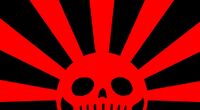Icarus Fall Dictionary (IF)
Jump to navigation
Jump to search
 |
| Solar Hard SF Setting |
- Acceleration — The rate of change in a ship’s velocity. In practice, this determines how quickly you can get anywhere and how much punishment the crew takes. Measured in meters per second squared or in Gs. Long burns at low acceleration are standard for most Belt hauls.
- Accelerator — A fixed mass driver used to hurl cargo into new orbits. Belt accelerators range from small ore launchers to massive facilities capable of sending kilotons toward the inner system. Those mounted on asteroids require regular station-keeping to counter recoil.
- Artificial Gravity — Any method of simulating gravity in space. In the Belt, this usually means rotation (spin habs) or constant acceleration. Full-gravity acceleration is rare outside of emergencies due to fuel cost.
- Carbonaceous — See C-type asteroid. Rich in carbon, organics, and often water ice. Prime targets for life-support materials but fragile and dusty.
- Delta-V — The measure of how much you can change your velocity with the fuel or reaction mass you have. A ship with plenty of delta-v can pick its fights and its ports; one running low is at the mercy of local traffic and tides.
- Dirty Zone — A region of space crowded with debris and small, fast-moving objects, often the by-product of careless mining or combat. Navigation here requires constant scanning and skill to avoid damage. See also Kessler Syndrome.
- Deuterium — Hydrogen isotope with one proton and one neutron. Valuable for fusion reactors, found in trace amounts in water ice.
- Earth Standard Gravity — 1 g, the acceleration due to gravity at Earth’s surface: 9.80665 m/s². Used as a benchmark for habitat spin rate and crew health limits.
- Fusion Rocket — See main entry. A spacecraft propulsion system using controlled fusion reactions to heat and expel reaction mass. Offers high thrust and high delta-v for long-range operations.
- Golden Age — The period of rapid expansion and high technology before the Icarus Fall. Characterized by large-scale infrastructure projects, high living standards in space, and extensive interplanetary cooperation.
- Gravity — The natural attraction between masses. In Belt life, usually refers to spin gravity or the faint surface gravity of asteroids. Ships and habitats often measure it in terms of Earth Standard Gravity.
- Habitat, also Cylinder Habitat or Rotating Habitat — See main entry. A large, spinning station that generates artificial gravity through rotation. Common in the Belt as long-term living space.
- Hydrogen Fuel — Common propellant and fusion feedstock. In Belt terms, usually refers to ordinary hydrogen (protium) stored as cryogenic liquid or bound in water ice.
- Icarus Fall, also The Fall or simply Fall — The catastrophic collapse of the Solar Alchemy Project, which destabilized the Sun and destroyed much of the inner system’s infrastructure. Marks the end of the Golden Age and the beginning of the fragmented, hard-scrabble present.
- Ion Drive — See main entry. A highly efficient electric propulsion system that accelerates ions using electromagnetic fields. Provides low thrust but extremely high specific impulse, ideal for long-duration travel.
- Jackpot Find — A mining or salvage discovery rare and valuable enough to change a crew’s fortunes overnight. Examples include rich platinum veins, exotic isotopes, intact pre-Fall tech, or uniquely suitable rocks for habitats.
- Kessler Syndrome — A chain reaction of orbital debris collisions, creating clouds of high-velocity fragments that make certain orbits hazardous or impassable. In the inner system, this still blocks some Earth orbits. In the Belt, smaller-scale dirty zones can form around busy mining regions. See also Dirty Zone.
- Radiation Shield — Any mass placed between crew and harmful radiation. In Belt habitats, this usually means tanks of water, layers of regolith, or waste slag wrapped around the living areas. In ships, shields are lighter and less effective, making storm shelters necessary during solar events.
- Reaction Mass — Propellant expelled from a spacecraft’s engines to produce thrust, as in Newton’s third law. Can be anything from hydrogen plasma to water or even mined rock, depending on the drive type.
- Regolith — The loose surface material on an asteroid, moon, or planet — dust, gravel, and broken rock. Can range from soft powder to boulder fields. For Belters, regolith is both a resource and a hazard; it gets everywhere, wears down tools, and can drift into dangerous clouds in microgravity.
- Remote — In Icarus Fall, a “remote location” is generally only reachable in certain time windows, due to factors such as an eccentric orbit, a high inclination relative to the planetary plane, or a nearby cluster of objects that form a navigation hazard. In this last sense, Earth could be called “remote” due to the remaining Kessler Syndrome, but as the center of human life, it is never considered truly remote.
- Solar Alchemy — The vast Golden Age project that attempted to manipulate solar fusion output for energy production and stellar engineering. Its failure triggered the Icarus Fall.
- Solar Wind — A constant stream of charged particles from the Sun. In the Belt, it can cause electrostatic charging, erode exposed surfaces, and sometimes create detectable X-ray emissions from certain minerals. A hazard during storms, and a subtle tool for prospectors who know how to read it.
- Spin Gravity — Artificial gravity generated by rotation. In habitats, measured at the inner surface; in ships, often combined with partial thrust. Too fast a spin causes vertigo and gravity gradients.
- Surface Gravity — The strength of gravity at the surface of a body. On most asteroids, this is a few thousandths of a g — barely enough to keep loose dust from drifting away.
- Tritium — Radioactive hydrogen isotope with one proton and two neutrons. Extremely rare naturally; produced in reactors. Used in advanced fusion fuel cycles.